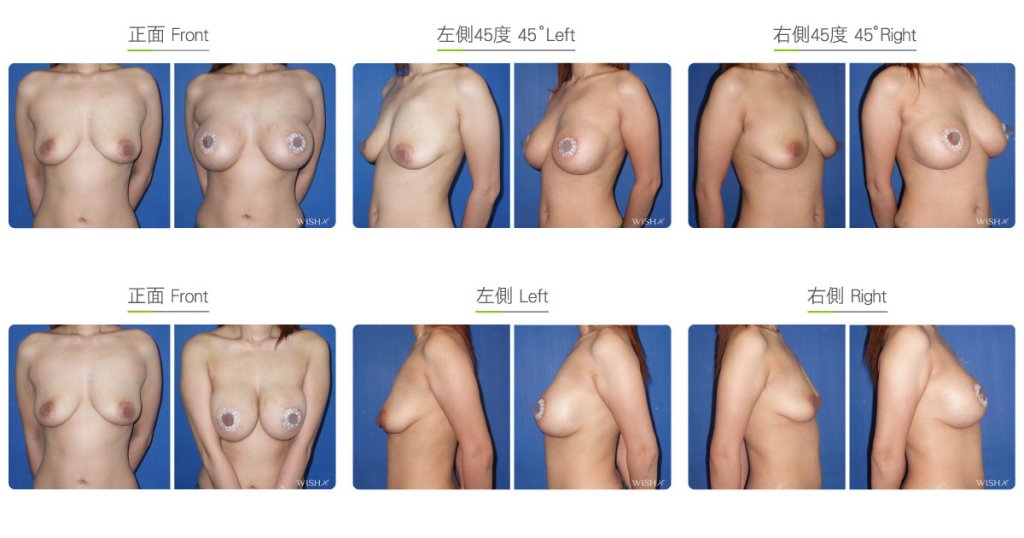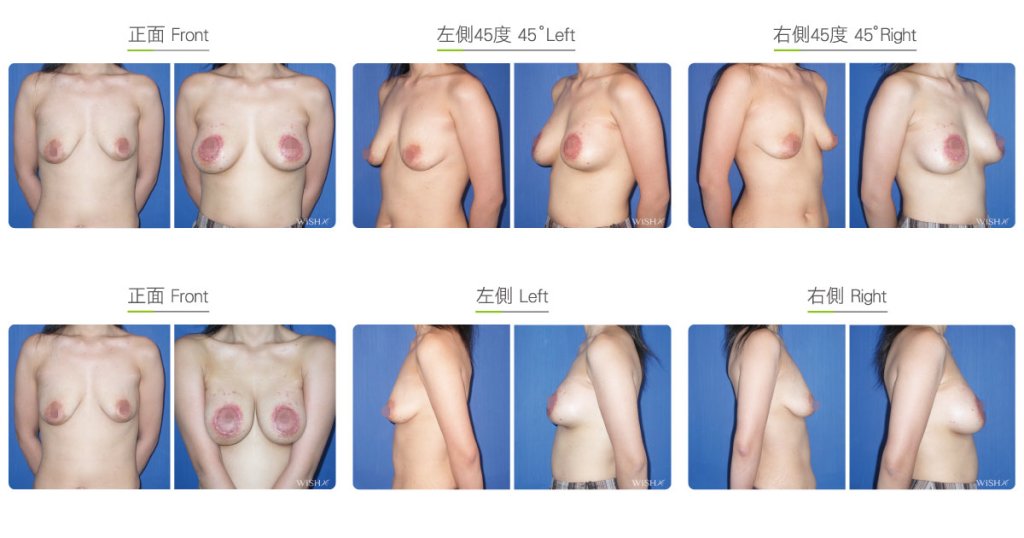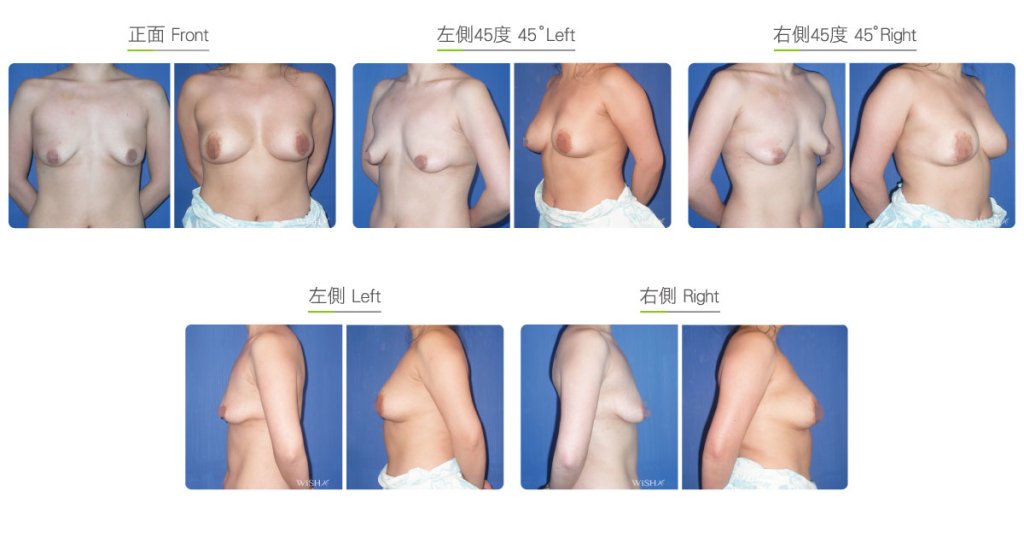Augmentation Mastopexy
This procedure is mainly used for patients with severe atrophy or breast ptosis (grade 4) along with excessive skin laxity. It combines periareolar lift (augmentation mastopexy) or reverse-T lift/reduction with implant placement. This method aims to support the base of the mammary gland tissue with the implant volume from the inside and improve breast atrophy and skin laxity by the partial removal and lifting of the soft tissue from the outside. This surgery consists of two steps, augmentation and lifting, and is a relatively complex procedure, among cosmetic breast surgeries. Following are some different considerations regarding this surgery:
- Although breast augmentation and reduction are both performed in this surgery, the ultimate goal is to increase breast size. It is not recommended for patients who are not comfortable with the size increase.
- Implants serve to support the breast tissue; therefore, the size should be conservative to prevent a burden on the breasts.
- The surgery is more invasive, and postoperative massage is nearly impossible. Thus, textured round or teardrop implants are preferred to eliminate the uncertainty of postoperative caring.
The surgery comprises two parts. First, a periareolar or transaxillary incision is made for submuscular access. A pocket is made, and implants of appropriate size are placed. Based on the degree of support provided by the implants, the incision size and range of excision for breast lift are determined. After proceeding with breast tissue and skin excision, Dr. Chuang will sculpt the new nipple position and breast shape. If the breasts are symmetrical, the wound would be closed. Despite providing the benefits of both augmentation and mastopexy, such composite surgery would require more time and has a higher risk of postoperative wound inflammation and infection. In addition, the cut of mastopexy is normally noticeable in the front of the chest, making postoperative massage difficult. Thus, Dr. Chuang recommends patients to consider textured implants to eliminate the need for postoperative massage and increase the stability and recovery of the procedure.
Surgical conditions
Duration
- Type of anesthesia: General anesthesia
- Type of incision: Periareolar and transaxillary incisions
- Recovery: Within 5–7 days
- Removal of stitches: 10–14 days
General instructions
No food and water on the day of surgery
- Alcohol consumption and smoking should be avoided for 1 month postoperatively to promote wound healing.
- Lifting of heavy weights with arms should be avoided for 3 months postoperatively.
- A supportive bra should be worn to sustain breast weight.
- Scar care must be continued for 6 months.
Ideal candidates
- Those with C to D cup ptotic or atrophic breasts (papaya-shaped breasts)
- Those with severe breast tissue loss and loose skin (potato sack-shaped breasts)
- Those with grade 3 or 4 ptosis coupled with areolar hypertrophy
- Those who would not like decreased breast size due to single breast reduction
- Those who would like to correct ptosis and increase breast size at the same time
Possible complications
- Areolar and breast scars
- Bleeding, seroma
- Infection
- Capsular contracture
- Implant displacement
- Implant leakage or rupture
Surgical advantages
-
The procedure effectively improves breast ptosis and provides sufficient support for the breasts, avoiding a decrease in cup size due to single mastopexy/reduction.
-
It effectively improves loose breast skin or hollow upper breasts.
-
It improves appearance and increases cup size at the same time.
-
Partial breast reduction can reduce areola size and decrease breast burden in the future.
-
Implants help maintain breast firmness with durable results.
Surgical drawbacks
-
A more invasive procedure with slower recovery.
-
More noticeable postoperative pain and swelling.
-
Possible scarring of the areola or breast skin.
-
Difficult postoperative massaging care.



